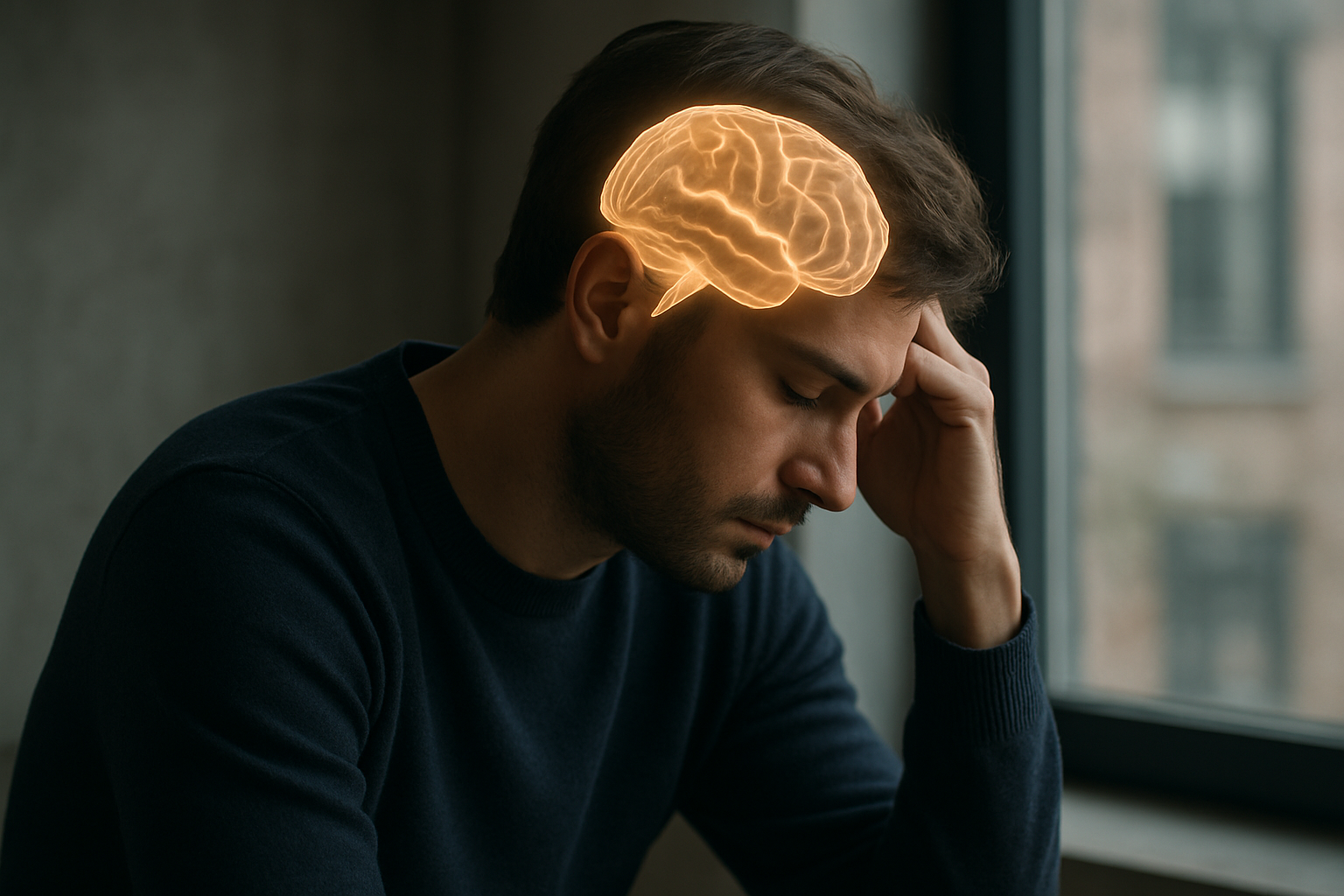Navigating the Shadows: Anxiety in Modern Society
Anxiety disorders have become increasingly prevalent in our fast-paced, interconnected world. These debilitating conditions affect millions globally, impacting daily life, relationships, and overall well-being. As society grapples with economic uncertainties, social pressures, and technological advancements, the incidence of anxiety continues to rise. Understanding the complexities of anxiety disorders, their origins, and effective treatment approaches is crucial for addressing this growing mental health concern. This article delves into the multifaceted nature of anxiety, exploring its historical context, current trends, and innovative strategies for management and prevention.

Early civilizations viewed anxiety primarily through spiritual or supernatural lenses, often attributing it to divine punishment or demonic possession. It wasn’t until the late 19th and early 20th centuries that anxiety began to be understood as a psychological phenomenon. Sigmund Freud’s work on neuroses laid the groundwork for modern understanding of anxiety disorders, though his theories have since been extensively revised and expanded upon.
As society progressed through the industrial revolution and into the digital age, new forms of anxiety emerged. The pressures of urbanization, increased social competition, and information overload have all contributed to the rising prevalence of anxiety disorders. Today, we recognize various forms of anxiety, including generalized anxiety disorder, panic disorder, social anxiety disorder, and specific phobias, each with its unique characteristics and challenges.
The Neurobiological Underpinnings of Anxiety
Recent advancements in neuroscience have provided valuable insights into the biological basis of anxiety disorders. Research has revealed that individuals with anxiety often exhibit heightened activity in the amygdala, a region of the brain associated with fear and emotional processing. This overactivity can lead to an exaggerated fear response, even in situations that pose no real threat.
Additionally, studies have shown that anxiety disorders are associated with imbalances in neurotransmitters such as serotonin, norepinephrine, and gamma-aminobutyric acid (GABA). These chemical messengers play crucial roles in regulating mood, sleep, and stress responses. Understanding these neurobiological mechanisms has led to the development of targeted pharmacological treatments, including selective serotonin reuptake inhibitors (SSRIs) and benzodiazepines.
However, it’s important to note that anxiety is not solely determined by biology. Environmental factors, life experiences, and learned behaviors all contribute to the development and maintenance of anxiety disorders. This complex interplay between nature and nurture underscores the need for comprehensive, multifaceted approaches to treatment and prevention.
The Digital Age Dilemma: Technology’s Role in Anxiety
The rapid advancement of technology has brought about unprecedented changes in how we live, work, and interact. While these innovations have undoubtedly improved many aspects of our lives, they have also introduced new sources of anxiety. Social media platforms, for instance, have created a culture of constant comparison and fear of missing out (FOMO), leading to increased stress and anxiety, particularly among younger generations.
The 24/7 news cycle and instant access to information have also contributed to heightened anxiety levels. Constant exposure to negative news and global crises can create a sense of helplessness and perpetual worry. Moreover, the blurring of boundaries between work and personal life, facilitated by smartphones and remote work technologies, has made it increasingly difficult for individuals to disconnect and relax.
However, technology is not inherently anxiety-inducing. In fact, it has also provided innovative tools for managing and treating anxiety. Mobile apps offering guided meditation, cognitive behavioral therapy exercises, and mood tracking have made mental health resources more accessible than ever before. Virtual reality exposure therapy has shown promise in treating specific phobias and social anxiety disorder by allowing individuals to confront their fears in controlled, simulated environments.
Cultural Variations in Anxiety Expression and Treatment
Anxiety manifests differently across cultures, influenced by societal norms, values, and beliefs. In some cultures, anxiety may be primarily expressed through physical symptoms, a phenomenon known as somatization. For example, in many Asian cultures, individuals experiencing anxiety may report physical discomfort such as headaches or stomach pain rather than emotional distress.
Cultural factors also play a significant role in how anxiety is perceived and treated. In collectivist societies, where group harmony is prioritized, social anxiety may be more prevalent due to the fear of bringing shame or embarrassment to one’s family or community. Conversely, in individualistic cultures, performance anxiety related to personal achievement may be more common.
These cultural differences highlight the importance of culturally sensitive approaches to anxiety treatment. What works in one cultural context may not be effective or appropriate in another. Mental health professionals are increasingly recognizing the need to incorporate cultural competence into their practice, adapting therapeutic techniques to align with the patient’s cultural background and beliefs.
Innovative Approaches to Anxiety Management
As our understanding of anxiety disorders continues to evolve, so do the strategies for managing and treating them. While traditional approaches such as cognitive behavioral therapy (CBT) and medication remain effective for many individuals, researchers and clinicians are exploring new, innovative methods to address anxiety.
Mindfulness-based interventions have gained significant traction in recent years. Practices such as mindfulness meditation and mindfulness-based stress reduction (MBSR) have shown promising results in reducing anxiety symptoms by fostering present-moment awareness and non-judgmental acceptance of thoughts and feelings.
Neurofeedback, a type of biofeedback that provides real-time information about brain activity, is another emerging treatment for anxiety disorders. By learning to regulate their brain waves, individuals may be able to reduce anxiety symptoms and improve overall emotional regulation.
Additionally, lifestyle interventions are receiving increased attention as complementary approaches to anxiety management. Regular exercise, particularly aerobic activities, has been shown to have anxiolytic effects comparable to some medications. Nutritional interventions, such as reducing caffeine and alcohol intake and increasing consumption of omega-3 fatty acids, may also play a role in anxiety reduction.
The Future of Anxiety Research and Treatment
As we look to the future, several promising avenues of research and treatment are emerging in the field of anxiety disorders. Genetic studies are uncovering potential biomarkers for anxiety, which could lead to more personalized treatment approaches. Advances in neuroimaging techniques are providing increasingly detailed insights into the brain mechanisms underlying anxiety, potentially paving the way for more targeted interventions.
The integration of artificial intelligence and machine learning in mental health care also holds significant promise. These technologies could potentially assist in early detection of anxiety disorders, predict treatment outcomes, and even provide personalized treatment recommendations based on vast amounts of data.
However, as we embrace these technological advancements, it’s crucial to maintain a balanced approach that considers the whole person. The complexities of anxiety disorders require a holistic perspective that addresses biological, psychological, social, and environmental factors.
In conclusion, anxiety disorders represent a significant challenge in modern society, but our understanding and ability to address them continue to improve. By combining traditional wisdom with cutting-edge research and innovative approaches, we can work towards a future where anxiety is better understood, more effectively managed, and perhaps even prevented. As individuals and as a society, fostering resilience, promoting mental health literacy, and reducing stigma around anxiety disorders will be key to navigating the shadows of anxiety and emerging into a brighter, more balanced future.




